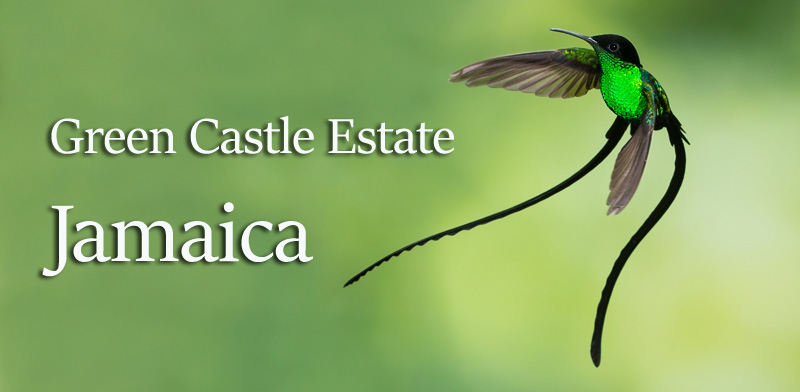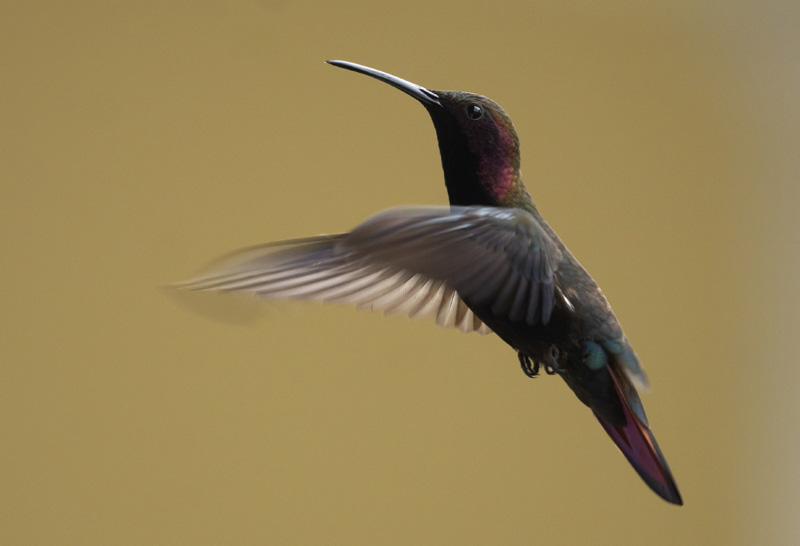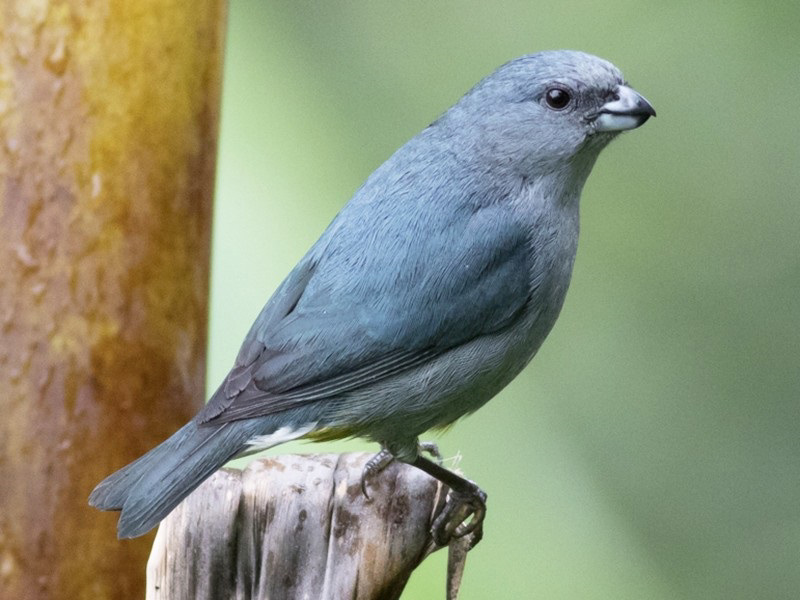|

Black-billed Streamertail, copyright Dubi Shapiro, from the surfbirds galleries
Exploring Jamaica's birdlife with Green Castle Eco Resort.
Jamaica boasts more endemic birds than any other Caribbean island. From the coastal plains to the densely forested mountains, Jamaica contains a great variety of landscapes and vegetation. And the ease with which so many endemic birds of Jamaica can be found is one reason why Jamaica is such a popular destination.
|
|
|

When looking at where to base ourselves in Jamaica for our group birding trip, we looked at many options, but ultimately it came down to only one that stood out Green Castle Estate. From the coastal plains to the densely forested mountains, Jamaica contains a great variety of landscapes and vegetation. Key habitats include the coast, wetlands, montane forest, farmland and both wet and dry limestone woodland. Each habitat contains a distinctive avifauna but all of the key species can be found in only a few, readily accessible sites. The ease with which so many endemic birds of Jamaica can be found is one reason why Jamaica is such a popular destination. This was partly why leading birding enthusiast, Arjan Dwarshuis chose Green Castle to visit in 2016 as part of his attempt at setting the world record for number of species seen within a single year – known as "Arjan's Big Year". Additionally, another world-renowned birder based himself at Green Castle to help achieve his world record – Jonathan Rossouw the original founder of Rockjumper Birding and Wildlife Tours. His record focused on seeing 9,000 species of bird by November 2018, which would be his 50th birthday. As Jonathan recounts on his website "only ONE destination in the Americas held the potential of a motherlode of easy pickings in so short a time frame: JAMAICA! As a result of its complex geology and relative remoteness from neighboring continents, Jamaica boasts more endemic birds than any other Caribbean island, a full 28 species!" Jonathan achieved his target following his birding vacation at Green Castle Hotel and nature reserve and is now the youngest person to have seen 9,000 bird species!
Both of these top birding enthusiasts chose Green Castle due to its central location on the island for seeing all of the Jamaican endemics.
|
|
|
Jamaican Tody, copyright Dubi Shapiro (left), from the surfbirds galleries and courtesy Green Castle Estate (right),
The Jamaican tody is endemic to Jamaica. They are found all around the island and can be seen near the semi-arid coast or in the humid mountains.
|
Green Castle's stats are impressive. All but one of the island's endemics have been recorded at Green Castle with most groups regularly seeing all 28 endemics, combining Green Castle and two birding tours to the Blue and John Crow Mountains. Overall seeing in excess of 100 migratory, Caribbean endemic and endemic bird species, with 171 species being the record. The majority of this being within Green Castles 1,600 acre/6.5 km sqaure rainforest. Below is one birder's account of our all-inclusive birding trip (https://www.gcjamaica.com/bird-watching/birding-tours) to Green Castle. All images are courtesy of surfbirds contributing photographers Dubi Shapiro, Ian Merrill and Richard Edden.
Day 1: Arrival & Transfer to Green Castle Estate
Following our arrival at Kingston airport, the island's capital (theres also Montego Bay airport), we were met by our friendly driver in an air-conditioned vehicle. We then travelled through some impressive mountain scenery until we reached our destination at Green Castle Estate. The journey time was approximately two hours and upon arrival, we received a warm welcome by the Estate staff where we were given a chilled scented towel and fresh local fruit juice (organically grown on the Estate) before our group were allocated rooms. We even saw a Jamaican Owl in the gardens before dinner!
.
All but one of the island's endemics have been recorded at Green Castle with most groups regularly seeing all 28 endemics, combining Green Castle and two birding tours to the Blue and John Crow Mountains.
Day 2: Green Castle Estate
On day 2, the birding began early right outside our rooms as we explored the gardens before breakfast where we saw a good mix of true Jamaican endemics as well as a number of endemic subspecies.
True endemics such as Orangequit and Jamaican Oriole were relatively easy to spot as well endemic subspecies like Olive-throated Parakeet, Loggerhead Kingbird and Vervain Hummingbird. Aside from the 28 true Jamaican endemics there are also at least 19 endemic subspecies. These subspecies are just as interesting as the 28 assigned endemics because in time, some of them may also be assigned to full endemic status!
After breakfast we had a brief orientation with our registered bird guide who took our group during our week's birding tour at Green Castle. We then spent a relaxing morning along the Waterfall Trail, where we encountered a dozen or so endemics including: Jamaican Mango, Jamaican Tody and Jamaican Woodpecker. We returned to the Estate House for a delicious light lunch and then spent a full day exploring a couple of the many birding trails. There are over 20 miles / 32 km2 of trails within Green Castle's 1,600 acres / 6.5 sq.km of private rainforest. The pace was relaxed, much like all life on a Caribbean Island! Whilst we slowly walked through the undulating hills, we saw a good selection of key endemics like Orangequit and Jamaican Oriole. Other impressive endemics we saw included Sad Flycatcher, White-chinned Thrush and the mesmerising Red-billed Streamertail! Scarcer endemics we hoped to find include Yellow-shouldered Grassquit and Jamaican Lizard Cuckoo. At the end of a long but fantastic day, we relaxed in our rooms before meeting for a hearty Jamaican dinner prepared by Stacey.
 |
|
White-eyed Thrush, copyright Dubi Shapiro, from the surfbirds galleries
Its natural habitats are subtropical or tropical moist lowland forests, subtropical or tropical moist montane forests, and heavily degraded former forest.
|
Day 3: John Crow Mountains – Ecclesdown Road
With a 5am start, we travelled to the Ecclesdown Road area, in the foothills of the John Crow Mountains – the far eastern end of the island. After such an early start, a packed breakfast (including hot porridge) was most welcome! Ecclesdown Road offered superb birding and had good numbers of endemics; we saw both Yellow-billed and Black-billed Parrots flying overhead and we also saw another species that we hadn't encountered – the Black-billed Streamertail. We even saw another speciality of the area – the Jamaican Crow!
We spent the morning walking this quiet road where we got some close-up views of birds which gave great opportunities for taking photos! We had lunch at Boston Bay, the world-famous home of Jamaican Jerk and then made a number of birding stops on our return to Green Castle. We were lucky, we saw some waders as well as the expected Magnificent Frigatebirds and Royal Terns over the sea.
After dinner at Green Castle, we went out once again looking for night birds and quickly saw the Northern Potoo.
|
|
|
Yellow-billed Parrot(left) courtesy Green Castle Estate and Black-billed Parrot (right), courtesy Eric Hynes
Both the Yellow-billed Parrot and the Black-billed Parrot are endemic to Jamaica. The Yellow-billed Parrot is found up to 1200m where it is more abundant in the John Crow Mountains, on Mount Diablo and in the Cockpit Country. In the breeding season it stays within rainforest. The Black-billed Parrot lives in mountainous rainforest, usually limestone rainforest, feeding on fruit, seeds, and nuts, and will take cultivated fruit like mangos, papayas and cucumbers as well as wild fruits. This parrot is smaller than the Yellow-billed Parrot. The Black-billed Parrot was once as common as the Yellow-billed Parrot, but has become much rarer due to deforestation and hurricane damage fragmenting its forest, poaching for food and the pet trade in wild parrots.
|
Day 4: Green Castle Estate
Today was more of a relaxed day. We had the option of morning and evening birding or afternoon and evening birding with our bird guide, taking time to explore more habitats around Green Castle's 1,600-acre site, starting with a pre-breakfast walk for the early risers if desired. After a hearty Jamaican breakfast at the Estate House, we set off to visit different parts of the Estate including Davey Hill, freshwater pools and the coast, where a different range of species can usually be found. Amongst a variety of waders and wildlife, we saw the elusive Caribbean Whistling-Duck. The Estate has both resident species as well as a number of colourful winter migrants like Northern Parula and Prairie Warbler. Other highlights we saw today included the Yellow-faced Grassquit and Greater Antillean Grackle, Black-whiskered Vireo and Loggerhead Kingbird.
After a beautiful lunch back at the Estate House, prepared by Stacey, we were back out on the trails and were lucky enough to see the aptly named Stolid Flycatcher, the busy Jamaican Mango and the very shy Mangrove Cuckoo.
After dinner at the Estate House, our bird guide took us for a spot of night birding, in search of the endemic Jamaican Owl, which can be found close to the house. We encountered the cryptic Northern Potoo, which is an endemic Jamaican sub-species that may soon be split as a full species and also the Barn Owl in the ancient Spanish Tower.
 |
|
Crested Quail-dove, copyright Dubi Shapiro, from the surfbirds galleries
The Crested Quail-dove is endemic to Jamaica. Its natural habitat is subtropical or tropical moist montane forests. It is threatened by habitat loss and is also known by the locals as the "mountain witch". It is one of the toughest of the 28 endemic species to connect with.
|
Day 5: Blue Mountains – Hardwar Gap
Today we had an early start - a 5:00 am departure (with packed breakfast) to visit Hardwar Gap in the majestic Blue Mountains. Though the journey was approx. two hours, it passed quickly in an air-conditioned vehicle with our bird guide.
We spent most of the morning in the Hardwar Gap area, which offered a huge variety of species. We saw three key Jamaican endemics; Jamaican Blackbird, Blue Mountain Vireo and the elusive Crested Quail Dove. As we'd had a successful morning, we rewarded ourselves with some Blue Mountain coffee at a local café (where we also had lunch). We had the opportunity to visit a coffee plantation but preferred to keep birding.
We then spent the afternoon exploring a little farther up the road, taking time to enjoy more of Jamaica's birdlife amidst stunning mountain scenery. As we proceeded further into Hardwar Gap, we were birding at an altitude of around 1,300 metres, walking along a quiet road through some wonderful cloud-forest. Some of the species we saw included Ring-tailed Pigeon, Jamaican Vireo, Rufous-tailed Flycatcher, Jamaican Pewee, Arrowhead Warbler, Jamaican and Greater Antillean Elaenias, the impressive looking and grandly named Jamaican Spindalis and the beautiful Chestnut-bellied Cuckoo!
After a long but exciting day, we had dinner back at the Estate House. After our evening meal we decided to go spotlighting for night birds. We saw the beautiful American Barn Owl, Northern Potoo (endemic subspecies) and most importantly, the endemic Jamaican Owl.
 |
|
Jamaican Mango, copyright Richard Edden, courtesy Green Castle Estate
The Jamaican Mango is endemic to Jamaica, where it frequents forest edges, lowland country, gardens and plantations. It is a common resident, breeding all year round.
|
Day 6: Green Castle Estate
Today we spent a more leisurely day around the estate exploring more new trails, including a visit to the reservoir. After another hearty Jamaican breakfast, we were lucky enough to spot a roosting Jamaican Owl. Other species we saw included Jamaican Vireo, White-Chinned Thrush and Rufous-tailed Flycatcher. After a beautiful light lunch at the reservoir, we returned to the coast where we spotted Antillean Nighthawk, Antillean Palm-swift and breeding Yellow Warblers (a Caribbean endemic subspecies). As a bonus, we also had great views of Brown Pelicans, Magnificent Frigatebirds and Royal Terns feeding offshore!
After dinner, we had time to look again for Northern Potoo, as well as the West Indian race of Barn Owl, which breeds on the estate.
 |
|
Jamaican Euphonia, courtesy Green Castle Estate
The Jamaican Euphonia (Euphonia jamaica) is also endemic to Jamaica. Its natural habitats are subtropical or tropical moist lowland forest and heavily degraded former forest. It is widespread and reasonably common over the entire island of Jamaica.
|
Day 7: Flexible Day
Though today was offered as a day to catch up on any endemics or species we hadn't seen as of yet, it was also given as a flexible day. As we'd had such a great week's birding, a couple of us decided to go visit Dunn's River Falls, one of Jamaica's premier tourist attractions and we combined this with a visit to Mystic Mountain Adventure Park. At Mystic Mountain, we were able to take a cable car up the mountain which offered breath-taking views and then bobsled down which is definitely one for anybody's bucket list.
In the evening, we had a farewell Jerk BBQ around the pool which was a nice finish to the week where we all swapped stories of the birds we'd spotted whilst enjoying complimentary rum (and fruit) punches with the light sound of reggae music in the background.
|
|
|
Arrowhead Warbler (left) and Jamaican Elaenia (right), courtesy Green Castle Estate
|
|

